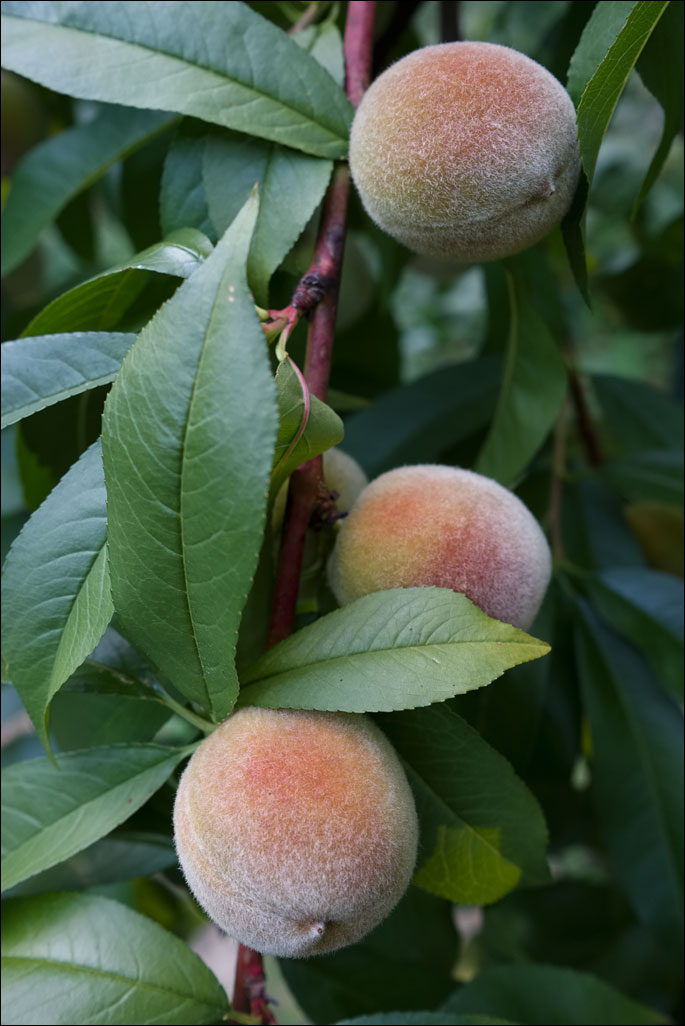 Our Red Haven peaches are doing well in spite of the fact we did not spray them this year. The fruit is not large, but these small tress produce an abundant crop. Click on the image for a larger view.
Our Red Haven peaches are doing well in spite of the fact we did not spray them this year. The fruit is not large, but these small tress produce an abundant crop. Click on the image for a larger view.
Category Archives: Edible Garden
Blue Spruce—Edible Plants
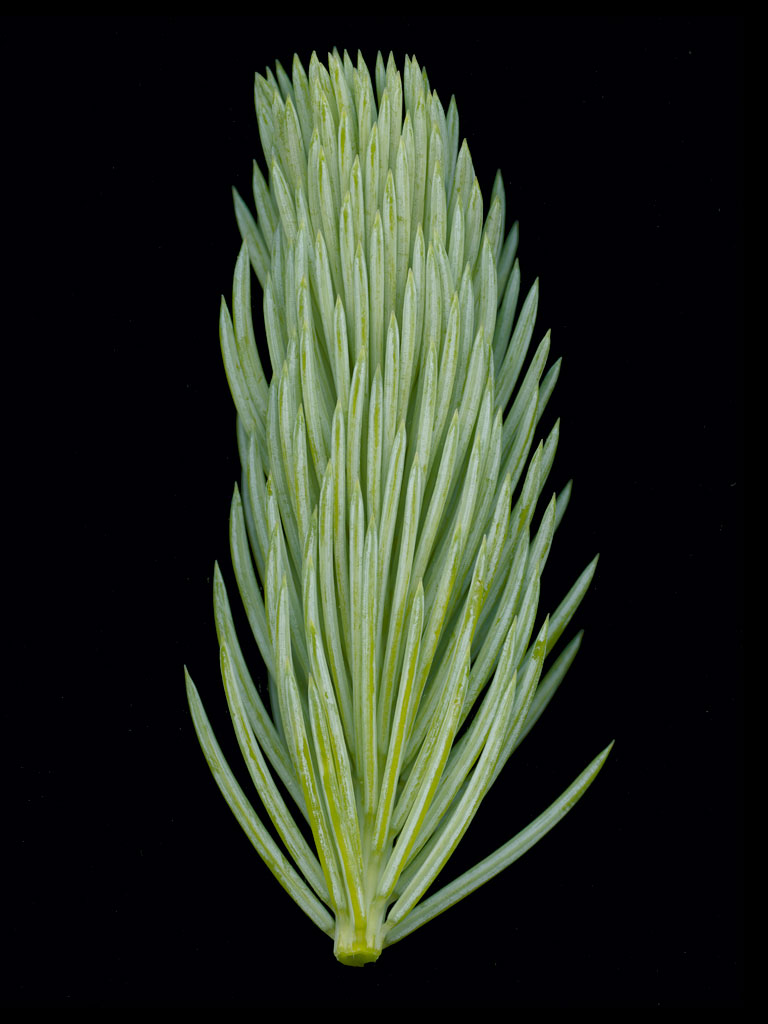 Blue spruce, picea pungens, is native to the Rocky Mountains, but can be found as ornamental trees throughout the United States. The young shoots can be used to make tea high in vitamin C. This bitter, resinous drink is surprisingly refreshing, although it is not uncommon for people to add a sweetener. Click on the image for a larger view.
Blue spruce, picea pungens, is native to the Rocky Mountains, but can be found as ornamental trees throughout the United States. The young shoots can be used to make tea high in vitamin C. This bitter, resinous drink is surprisingly refreshing, although it is not uncommon for people to add a sweetener. Click on the image for a larger view.
Sweet Crab in Bloom
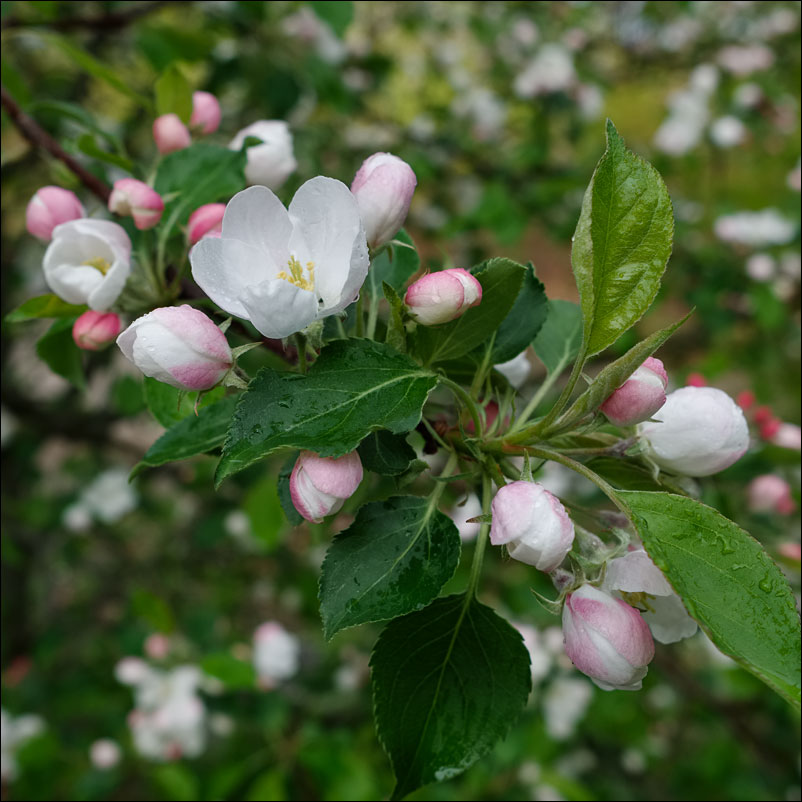 Spring is such an amazing time of year. We have had months of a dry, brown landscape, and then, within a matter of weeks, the landscape transforms. After two days of rain, there was a break in the weather this evening. I went out to see our sweet crab apple tree. Not only do we enjoy its magnificent spring display, in the late summer, we can also harvest its fruit. Click on the image for a larger view.
Spring is such an amazing time of year. We have had months of a dry, brown landscape, and then, within a matter of weeks, the landscape transforms. After two days of rain, there was a break in the weather this evening. I went out to see our sweet crab apple tree. Not only do we enjoy its magnificent spring display, in the late summer, we can also harvest its fruit. Click on the image for a larger view.
Daylily—Edible Plants
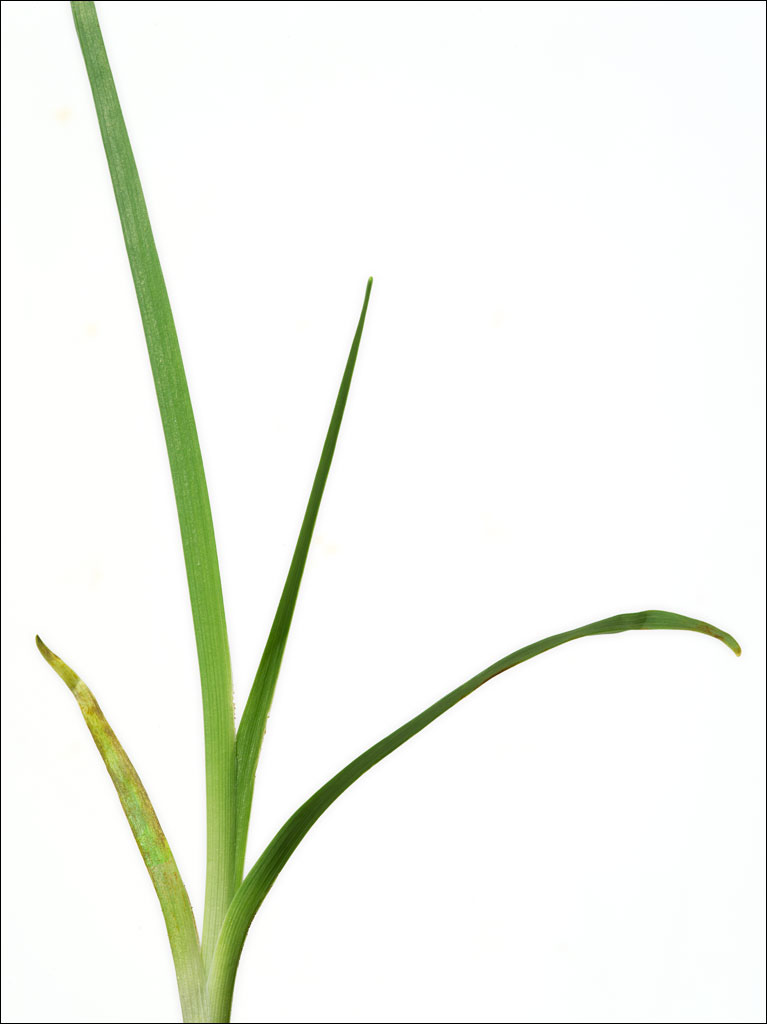 Our daylilies are emerging. While the daylily (hemerocallis fulva) is known as a decorative plant, it is also edible. This time of year we eat the young shoots by stir frying them in soy sauce and serving them on tofu. We harvest the shoots when they are only a few inches long. The ones pictured here would be a little too old. Click on the image for a larger view.
Our daylilies are emerging. While the daylily (hemerocallis fulva) is known as a decorative plant, it is also edible. This time of year we eat the young shoots by stir frying them in soy sauce and serving them on tofu. We harvest the shoots when they are only a few inches long. The ones pictured here would be a little too old. Click on the image for a larger view.
Wild Plum, Spring Blossoms
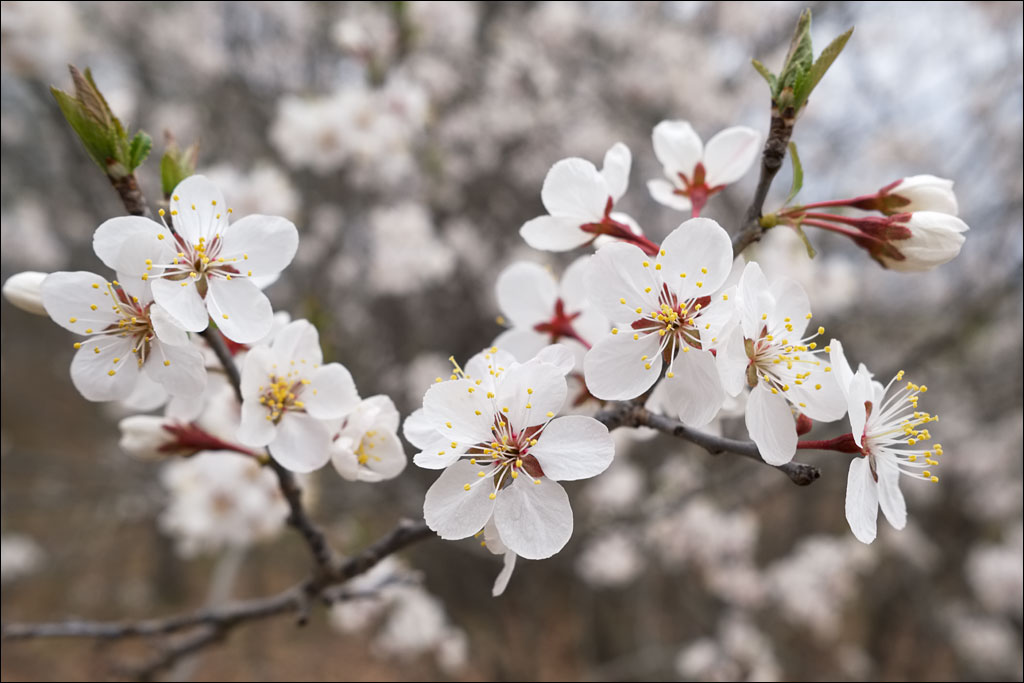 This spring has been wet and gray. The foliage is just starting to appear on our trees. However, our wild plum has come into blossom. This is our messenger of spring. One corner of our land glows with these brilliant white flowers. As the blossoms mature, they turn a deep pink. Click on the image for a larger view.
This spring has been wet and gray. The foliage is just starting to appear on our trees. However, our wild plum has come into blossom. This is our messenger of spring. One corner of our land glows with these brilliant white flowers. As the blossoms mature, they turn a deep pink. Click on the image for a larger view.
Winter Fields
Winter Blackberries
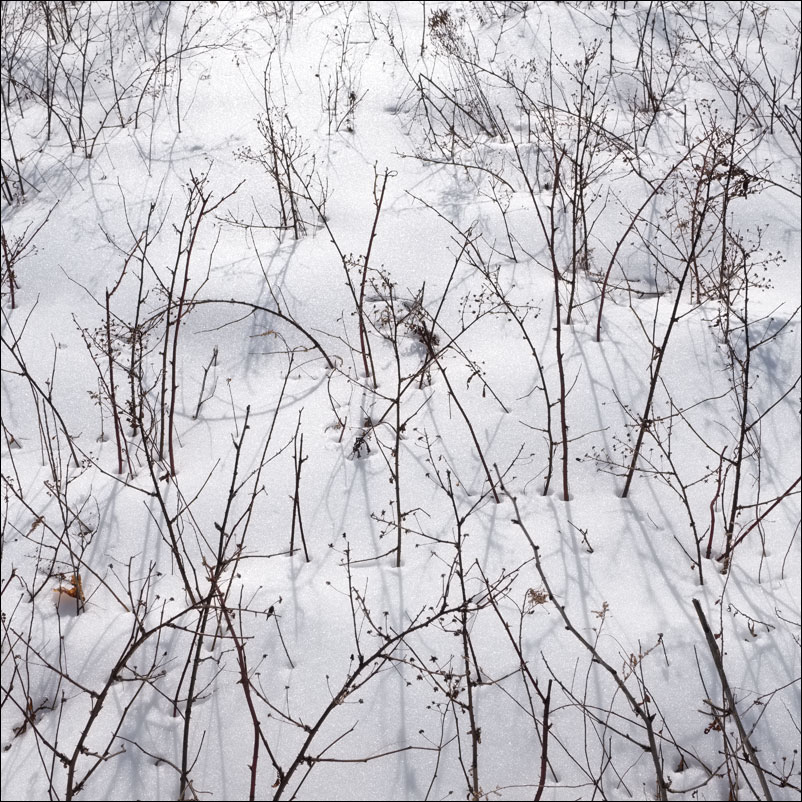 I explored our land this weekend. We have had unusual amounts of rain, freezing rain, and sleet this winter. The snow pack is hard and slippery–normally when I wear snowshoes, it is so I don’t sink too far into the snow, but now I just need the crampons on the shoes to stop from slipping.
I explored our land this weekend. We have had unusual amounts of rain, freezing rain, and sleet this winter. The snow pack is hard and slippery–normally when I wear snowshoes, it is so I don’t sink too far into the snow, but now I just need the crampons on the shoes to stop from slipping.
Our blackberry field is like an abstract painting of hard black strokes on a brilliant white canvas. This is such a stark transformation from what this field looks like in the summer. Click on the image for a larger view.
Blue Jay in Winter
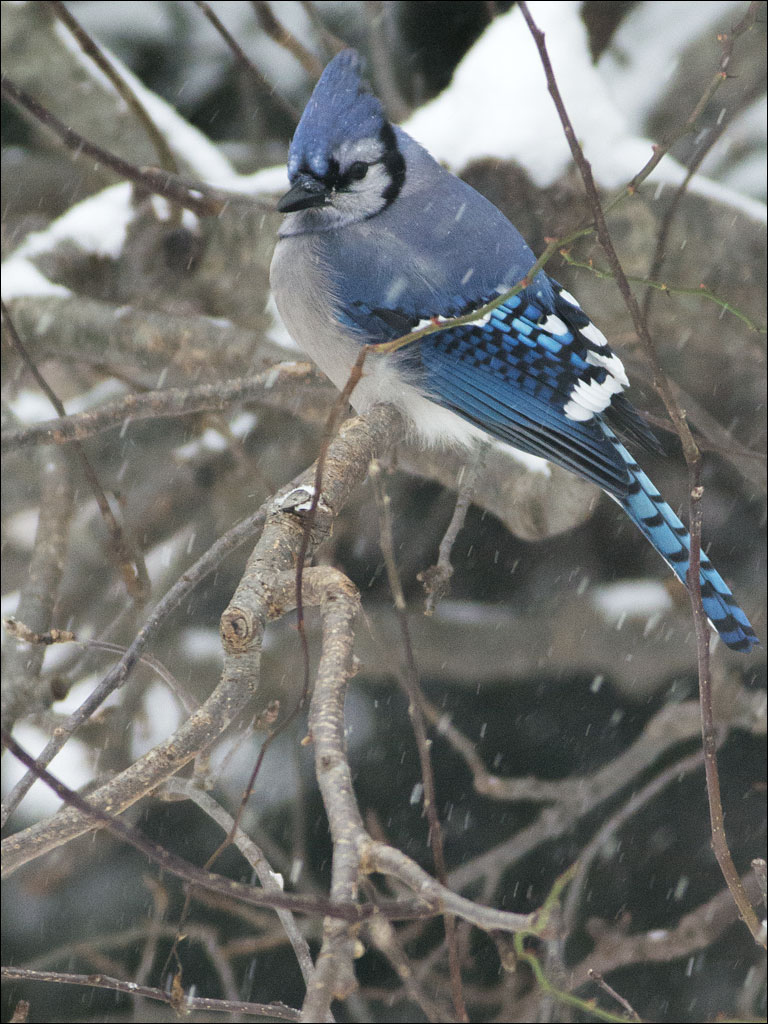 It was a dark, snowy weekend. We had our usual visitors to our bird feeder: chickadees, junco, mourning doves, titmice, cardinals, and goldfinches. We usually do not have blue jays at our feeders, even though they are a common bird in Maine. These intelligent birds—they are a member of the crow family—have striking plumage in any season. If they were not so common, they would attract bird watchers from around the world. Click on the image for a larger view.
It was a dark, snowy weekend. We had our usual visitors to our bird feeder: chickadees, junco, mourning doves, titmice, cardinals, and goldfinches. We usually do not have blue jays at our feeders, even though they are a common bird in Maine. These intelligent birds—they are a member of the crow family—have striking plumage in any season. If they were not so common, they would attract bird watchers from around the world. Click on the image for a larger view.
First Snow, Winter 2016
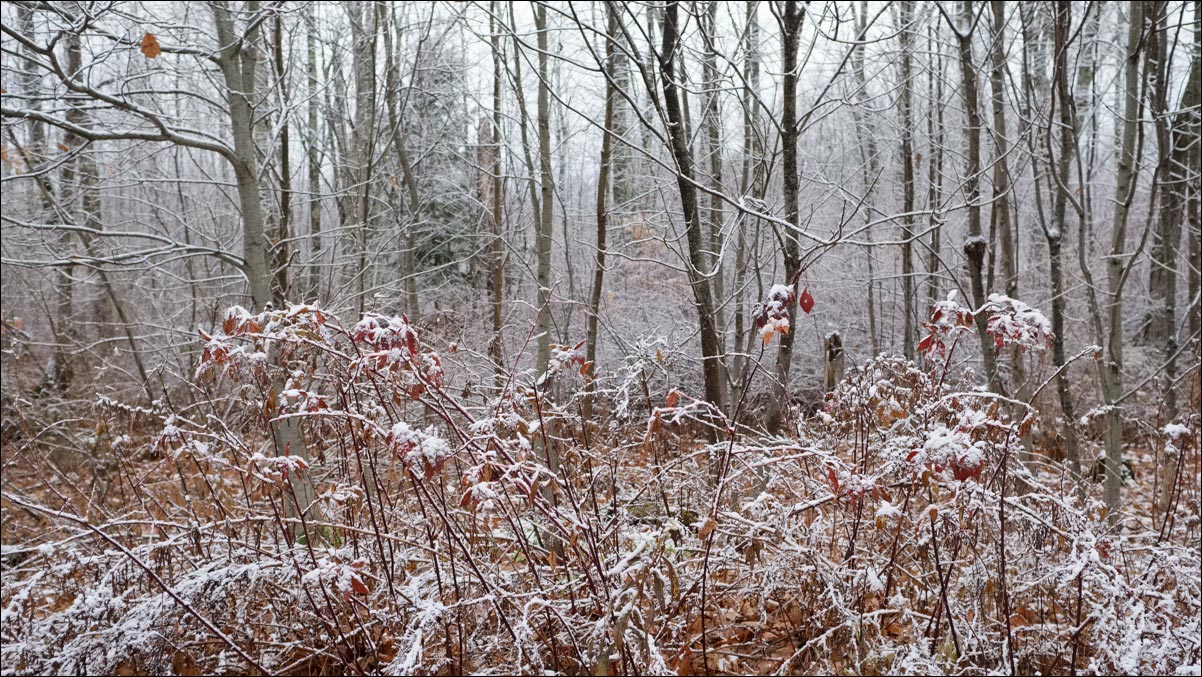 We woke this morning to the first snow of winter. Nothing bad, just a thin layer of crusty ice. The weather has been so mild and warm this year that the snow was a not so gentle reminder the season is changing. One of our blackberry briers is in the foreground. It looked very different in August. Click on the image for a larger view.
We woke this morning to the first snow of winter. Nothing bad, just a thin layer of crusty ice. The weather has been so mild and warm this year that the snow was a not so gentle reminder the season is changing. One of our blackberry briers is in the foreground. It looked very different in August. Click on the image for a larger view.
Grape Harvest
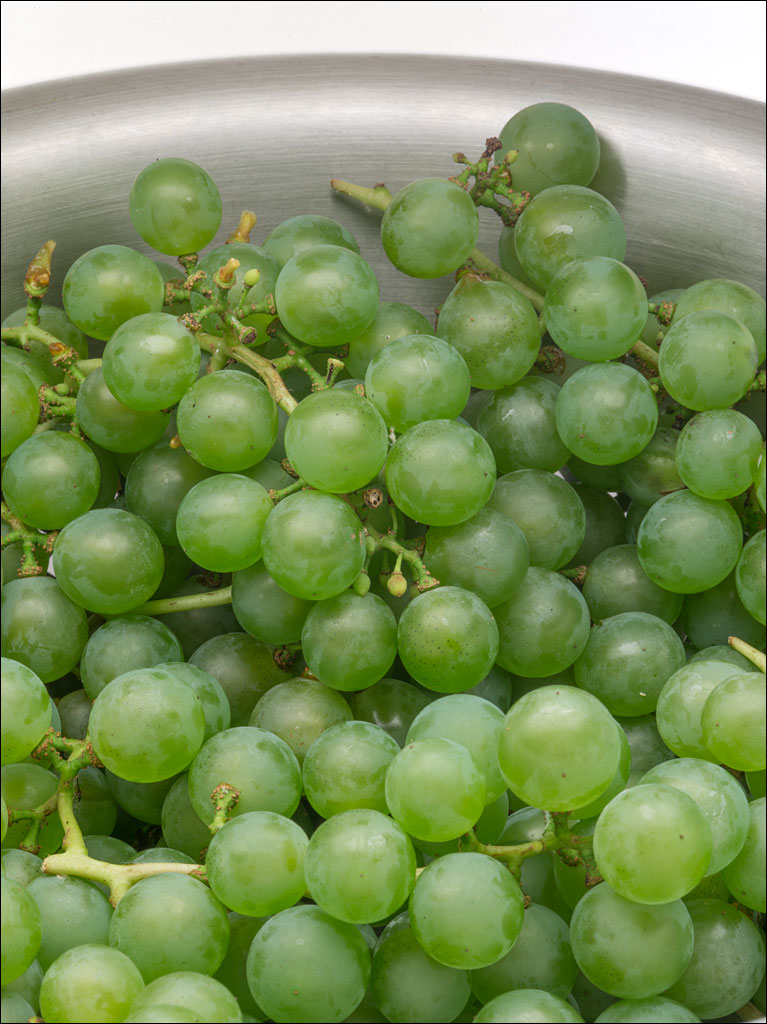 We harvested the last of this year’s grapes yesterday—three large bowls of fruit. We had been enjoying our grapes for the last three weeks. But with evening temperatures dropping, it was time to finish. These are entirely organic, no pesticides are used to protect them. We lose a few fruit to insects, more to birds, but plenty are left for us. Click on the image for a larger view.
We harvested the last of this year’s grapes yesterday—three large bowls of fruit. We had been enjoying our grapes for the last three weeks. But with evening temperatures dropping, it was time to finish. These are entirely organic, no pesticides are used to protect them. We lose a few fruit to insects, more to birds, but plenty are left for us. Click on the image for a larger view.

